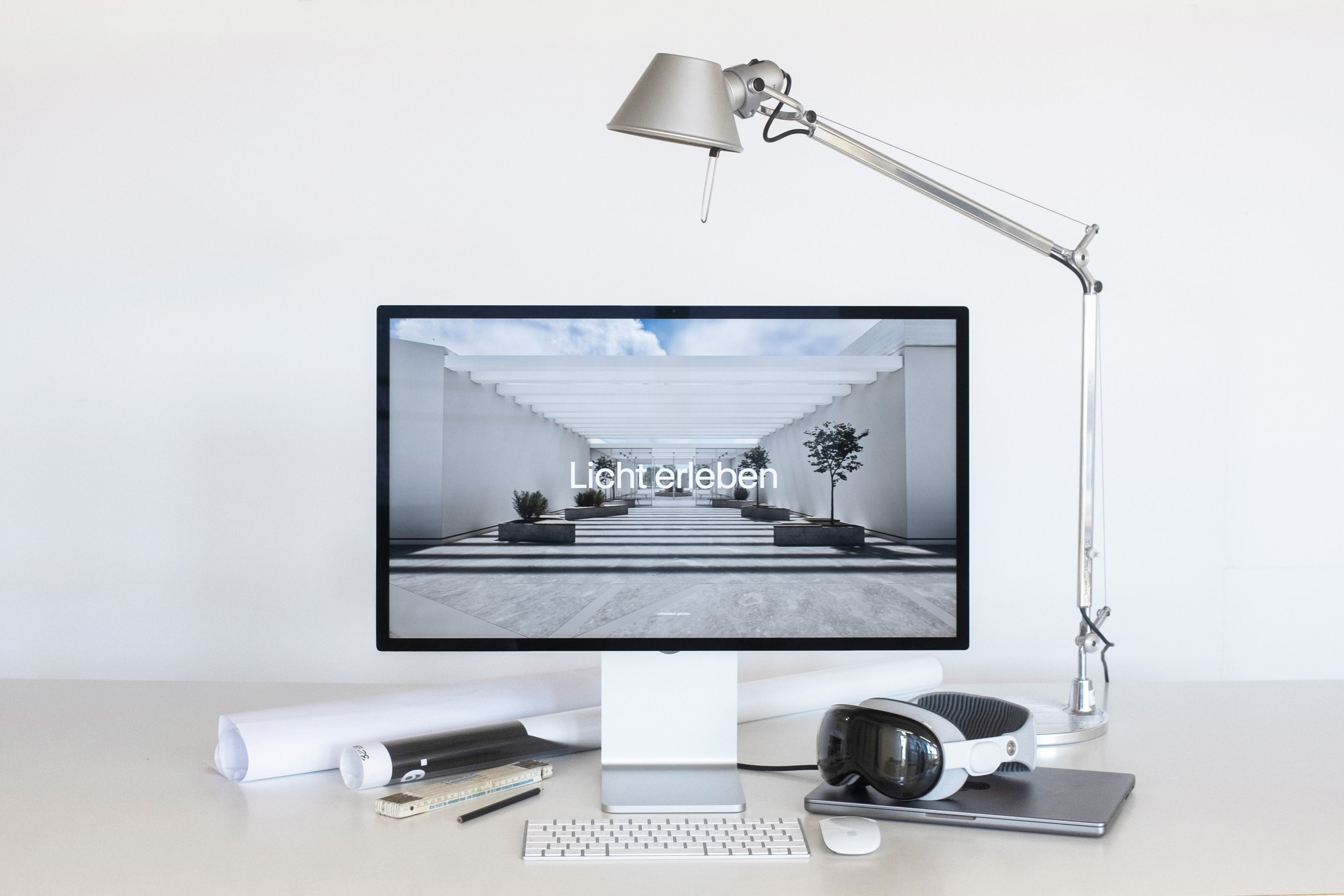
Experience Light – Digitally. Immersively. Designed for People.
Year
2025
Team members
Anja Gutmann, Aileen Hoffmann
Scope of Work
Bachelor Thesis
As part of a collaboration with ERCO, a leading manufacturer of architectural lighting, we developed a digital spatial experience that not only explains lighting effects, but makes them visually and interactively tangible. The goal of the project was to translate the content of ERCO’s Handbook of Lighting Design—a renowned reference in the field—into a digital, future-oriented format. The result is an interactive application that makes the impact of light spatially perceptible, conveys knowledge, and offers inspiration for real-world practice.
Challenge
Light shapes how we perceive space. It creates atmosphere, guides the eye, and sets the mood. Yet in many building projects, lighting is often overlooked during the planning phase—simply because its effect is hard to imagine. Interviews with architects, lighting designers, and architecture students revealed a clear gap: there’s a lack of intuitive, visual tools that make the impact of light easy to understand.
Idea
ERCO aims to make professional lighting knowledge more widely accessible and has created a comprehensive resource with its Handbook of Lighting Design. Our project builds on this ambition by transforming the handbook into a digital, interactive application—making its content tangible for both experts and newcomers in the field.
Solution
Users begin by selecting from a range of spatial settings—such as office, museum, or hospitality environments. Each setting demonstrates how lighting can be used differently depending on the architectural context. Within the chosen environment, the digital experience is divided into dramaturgically designed stations that can be explored interactively. Each station focuses on a key principle of architectural lighting design—from basic ambient lighting to dynamic, scene-based scenarios. This spatial experience is complemented by a didactic layer: short, topic-based explanations that help users understand the lighting effects being shown. The focus lies on the relationship between light and space. By combining information, inspiration, and interaction, the project makes light visible and tangible as the fourth dimension of architecture.
